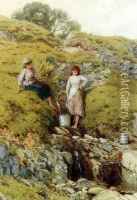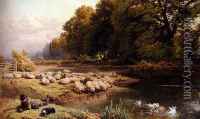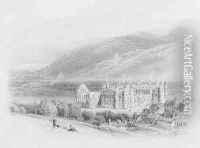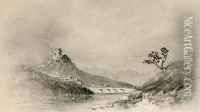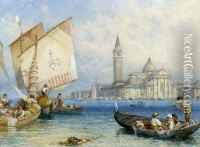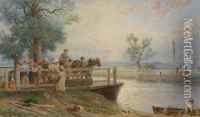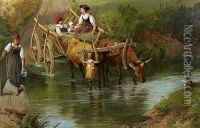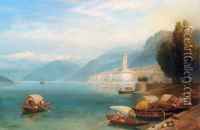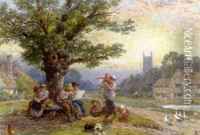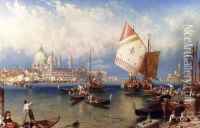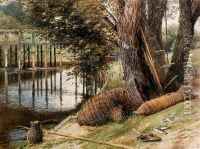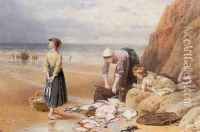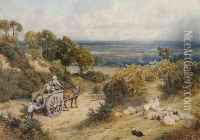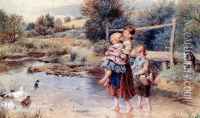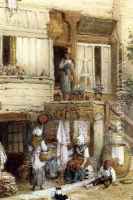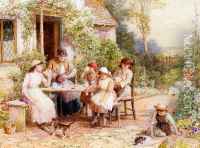Myles Birket Foster Paintings
Myles Birket Foster was a British illustrator, watercolourist, and engraver born on February 4, 1825, in North Shields, Northumberland, England. He was known for his idyllic and pastoral paintings of the English countryside, which were highly popular in the Victorian era. Foster's work is characterized by its meticulous detail, vibrant colors, and the romanticized depiction of rural scenes.
Foster began his artistic career as an apprentice to Ebenezer Landells, a wood engraver in London, where he learned the skills that would serve him throughout his life. In the 1840s, he started to work for the Illustrated London News, providing illustrations for the publication. His work gained recognition, and he began to receive commissions for book illustrations, including editions of the works of authors such as William Shakespeare, Oliver Goldsmith, and others.
After establishing himself as a successful illustrator, Foster transitioned to watercolour painting in the 1850s. He exhibited his watercolours at the Royal Academy and the British Institution, and he became associated with the Royal Watercolour Society. His paintings typically featured scenes of the English and Scottish countryside, often with figures of children and farm workers, and were marked by a sense of nostalgia and tranquillity.
Throughout his life, Foster travelled extensively in Europe, particularly in Italy, where he was inspired by the landscape and the quality of light. His travels influenced his work, bringing in elements from the continental scenery he encountered.
In the latter part of his career, Foster's popularity continued to grow, and his paintings were highly sought after by Victorian art collectors. He amassed a considerable fortune through his art and was able to build a grand house called 'The Hill' in Witley, Surrey, where he lived with his family.
Myles Birket Foster passed away on March 27, 1899. Although his work fell out of favor in the early 20th century, overshadowed by the modernist movements, he is still remembered as one of the quintessential Victorian artists, whose works provide a romanticized glimpse into the rural life of his time.
